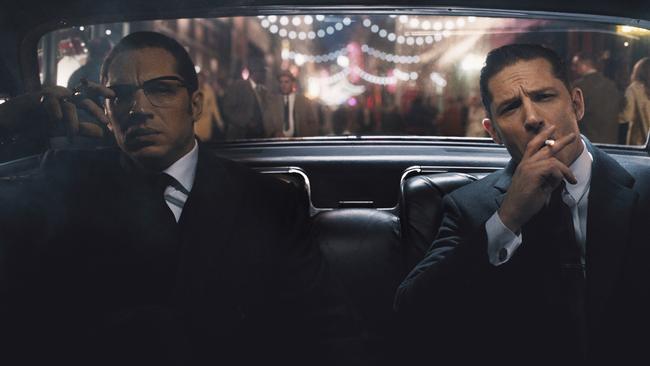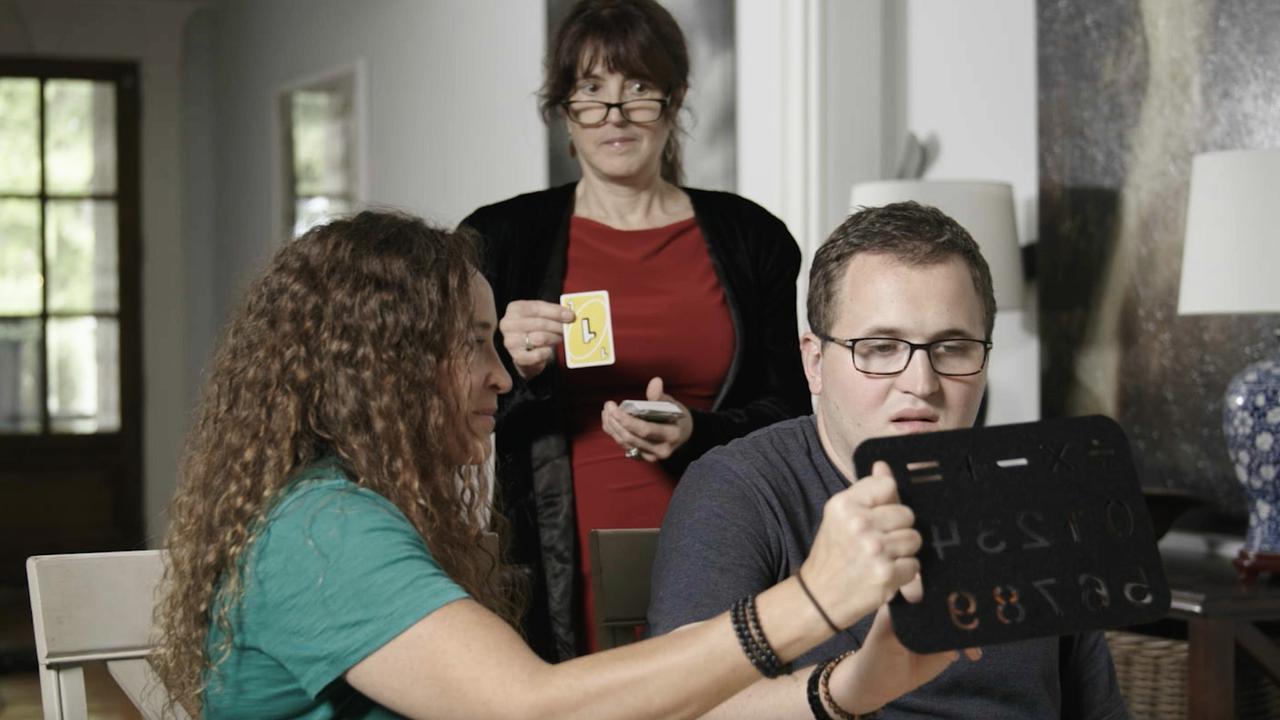Kray twins revived by Tom Hardy in Brian Helgeland’s Legend
Film director Brian Helgeland reveals how Tom Hardy brought back to life the infamous Kray twins.

American writer-director Brian Helgeland half anticipated Londoners would doubt his attempt, in Legend, to dramatise the story of the infamous Kray twins — the gangsters Reggie and Ronnie, who dominated the East End of London during the 1950s and 60s with a mix of ruthlessness, charm and glamour that won as many fans as foes. Yet the writer of LA Confidential and director of A Knight’s Tale and Payback had a ready response.
“There’s was a lot of ‘How could an American possibly do this?’ ” he concedes. “To which we’d say the best western ever made in the United States was directed by an Italian [Sergio Leone’s Once Upon a Time in the West], so I’ll give it a shot.”
Helgeland notes there is a “very strange” ownership of the Krays in London. He spent time at E. Pellicci cafe in Bethnal Green Road, a former breakfast haunt of the terrible twins. “And it’s filled with people who pull you aside and say the East End was a safer place when the Krays were here,” he says. “And then there’s a whole other group of people who say, ‘They’re scumbags. Why would you want to make a movie about scumbags?’ ”
REVIEW: David Stratton gives his verdict on Legend
Then there’s the regional divide, with south Londoners arguing the toughest criminal “firm” of the period was the Richardsons. “It’s like supporting a football team,” laughs the American fan, via LA Confidential’s Russell Crowe, of the NRL team the South Sydney Rabbitohs.
“But there was something glamorous about the Krays — and I say that word and I don’t mean being glamorous is a good thing or a bad thing, because LSD was glamorous in the 60s, too.
“But the Richardsons didn’t own nightclubs; the Richardsons weren’t photographed with all these celebrities; David Bailey never took a photo of the Richardsons — so there was something about the Krays that was attractive at the time.”
Hindsight says they were monsters but Helgeland’s research — and subsequent film — shows that back then in that clubland world there was something alluring about the twins. It partly explains why a writer from Rhode Island would take on a British gangster tale.
Helgeland says he always wanted to make a gangster film but doing a straight Italian mob film is “almost pointless” given the great movies already made on that theme, to say nothing of The Sopranos.
“But the chance to take one step away from it, in a way, and do a British film was very appealing to me because I thought this was how I could move away from the comparison,” he says. Legend becomes a very different gangster film purely through the casting of Tom Hardy as both twins.
Helgeland says he didn’t plan it that way. When he was writing the screenplay, he was focused on the story and character. “When you’re done writing, the reality descends,” he says.
There are precedents for one actor playing twins (including Jeremy Irons in Dead Ringers, Nicolas Cage in Adaptation, Hayley Mills and Lindsay Lohan in different versions of The Parent Trap and, most recently, Armie Hammer in The Social Network) and the director appreciated that was a possibility.
“But the scary thing about that is if you don’t pull it off, the movie is not going to pull it off and you’re dead from the start,” he says. The alternative is limiting the role of the second actor, which would have made sense in Legend, where the charismatic Reggie is the main character.
Hardy already has form as a screen criminal, having starred in Bronson, the 2008 film by Nicolas Winding Refn dramatising Britain’s most notorious prisoner. Helgeland wanted him to play Reggie, and take it from there. It became clear as soon as the two sat down for dinner, though, that the actor wanted to play the violent, mentally unstable Ronnie.
“At the end of the dinner, he knew it and he said, ‘I’ll give you Reggie if you give me Ron’,” Helgeland recalls. “I agreed to that at the dinner, and that was the biggest decision of the film — and now we’ve either made or broken the movie right from the start!”
Initially, there was a chance they might shoot Hardy as Reggie before the film’s production was interrupted — “like Raging Bull” — for a period, allowing the actor to gain some weight and return as Ronnie.
But the production didn’t have the luxury of time or being able to return to locations in what is a location-heavy film. So Hardy had to play both brothers on the same day and the crew didn’t have much time for the switch.
The transformation would be tight, taking Reggie and putting on a wig to lift “a kind of off-kilter widow’s peak” for Ronnie. Hardy’s Ronnie also had plumpers, a dental appliance on his bottom jaw to fill his lower cheeks, in the style of Marlon Brando.
And because the production didn’t have the time to affix prosthetics, the costume department improvised by cutting the nipple off the top of a baby’s bottle to shove up the actor’s left nostril. Then the actor kicked in.
“Tom is almost like a mime. He has great body control,” Helgeland says.
“He played Reggie with sloped shoulders and he played Ron with square shoulders. He furrowed his forehead when he played Reggie. If you can tell me how a person can furrow his forehead and keep it like that for hours at a time, I have no idea — but Tom was able to do it, and then have a smooth forehead for Ron.”
The transformation appears to have satisfied those who knew the Krays (Ronnie died in 1995 and Reggie in 2000), Helgeland says. The director and Hardy worked with one of the Krays’ associates, former hit man Freddie Foreman, or “Brown Bread Fred”, while researching the role.
Helgeland laughs when he recalls the time Foreman visited the set and was having a chat with the director.
“Freddie looked over my shoulder and said ‘Jesus f..king Christ!’ or something to that effect, and he was shocked,” he says. “I turned around and over my shoulder there was Tom dressed as Ron and in Ronnie mode. He looked at Freddie and, in character as Ron, said, ‘Hel-lo Fred-die’ — and it was like Freddie had seen a ghost.
“He couldn’t believe it and said, ‘I’m looking at Ron Kray 25 years after his death.’ He was shaking, he couldn’t get over it.”
Helgeland is similarly rapturous about the casting of Australian actress Emily Browning, who brings some equilibrium to the film in her role as Reggie’s sweetheart Frances Shea.
The director notes, “Every successful film I’ve done — just about — has had an Australian in it, especially if you consider Mel Gibson Australian [in Payback].”
He adds that Browning possibly has the hardest job in the film, having to co-star with someone who is “in everyone’s list as one of the top actors in the world — and she has to act opposite two of him”.
“She has that daunting task in front of her and she matches him in a quieter way, in a less flashy way and holds her own for a time and gives him a run for his money and makes his performances better because she’s so good,” Helgeland says. “She makes the movie for those reasons, and for bringing a woman’s point of view into the film. She’s also the lowest-maintenance actor I’ve ever been around.”
Legend opens nationally on Thursday.


